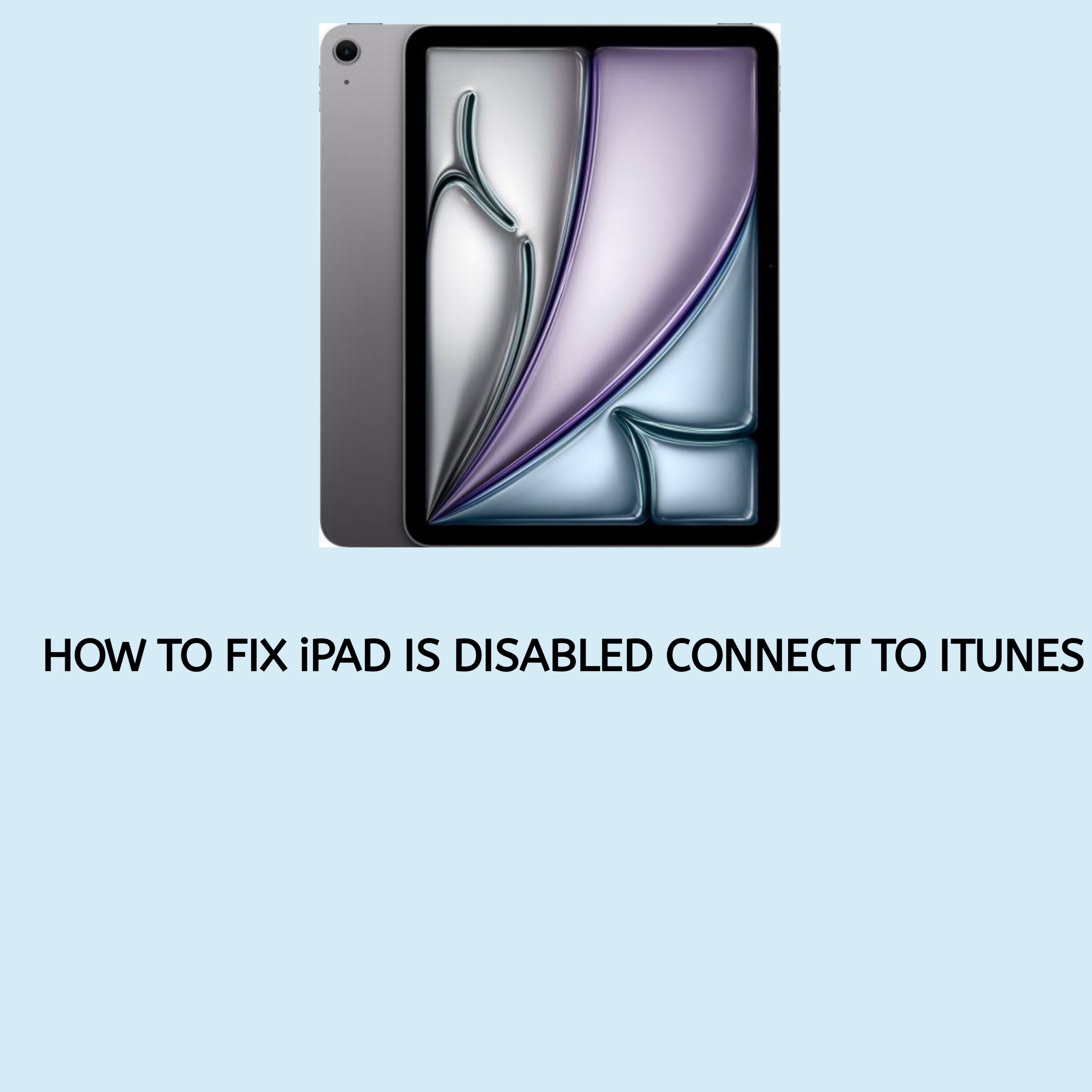If you’ve encountered the dreaded “iPad is Disabled Connect to iTunes” message, you’re not alone. This frustrating error usually happens after multiple incorrect passcode attempts.
What Does “iPad is Disabled” Mean?
The “iPad is Disabled” message appears when you’ve entered the wrong passcode too many times. Apple’s security features temporarily lock your device to prevent unauthorized access. After 10 failed attempts, the iPad becomes fully disabled, leaving you unable to access it without resetting the device.
This situation emphasizes the importance of remembering your passcode or using alternative security features like Face ID or Touch ID.
Preparing to Fix the Disabled iPad
Before you start, make sure you have:
- A computer with iTunes installed (Windows or macOS Mojave or earlier) or Finder (macOS Catalina or later).
- Your Apple ID credentials to verify ownership.
- A USB cable to connect your iPad to the computer.
If you have a recent backup, you’ll be able to restore your data after unlocking your iPad.
Step-by-Step Guide to Fix the Issue
Option 1: Using iTunes
- Connect Your iPad to a Computer
- Open iTunes on a PC or Mac (macOS Mojave or earlier).
- Connect your iPad using a USB cable.
- Enter Recovery Mode
- For iPads with a Home button: Press and hold the Home button and the Power button simultaneously until the Recovery Mode screen appears.
- For iPads without a Home button: Quickly press the Volume Up button, then the Volume Down button, and hold the Top button until Recovery Mode appears.
- Restore Your iPad
- In iTunes, select your device.
- Choose “Restore” when prompted.
- Wait for the process to complete, then set up your iPad.
Option 2: Using Finder (macOS Catalina or Later)
The process is similar to iTunes but uses Finder on macOS Catalina or later versions.
- Open Finder and connect your iPad.
- Follow the same Recovery Mode steps as above.
- Select your iPad in Finder and click “Restore.”
Option 3: Using iCloud (Find My iPad)
If you’ve enabled “Find My iPad”:
- Go to iCloud.com and log in with your Apple ID.
- Select your disabled iPad from “All Devices.”
- Click “Erase iPad” to wipe the device and remove the passcode.
- Restore your data from a backup during setup.
Option 4: Using Third-Party Tools
Several trusted tools, like Tenorshare ReiBoot or iMyFone LockWiper, can help unlock a disabled iPad. These tools are particularly useful if you’re unable to use iTunes or iCloud.
Common Problems and Troubleshooting
- iTunes Doesn’t Recognize the iPad
- Make sure your computer’s operating system and iTunes are up to date.
- Use a different USB cable or port if the connection isn’t working.
- Forgotten Apple ID Credentials
- Use Apple’s ID Recovery tool to reset your credentials.
- Recovery Mode Fails to Load
- Double-check that you’re following the correct button sequence for your iPad model.
Preventing the “iPad is Disabled” Issue
- Memorize Your Passcode or store it in a secure password manager.
- Enable Face ID or Touch ID for easier access.
- Regularly back up your iPad using iCloud or iTunes to avoid data loss.
- Teach young children or others who use your iPad to avoid guessing the passcode.
FAQs
What happens if I don’t know my Apple ID?
You can recover your Apple ID using Apple’s Forgot Apple ID page. If you still face issues, contact Apple Support for further assistance.
Will I lose all my data if I restore my iPad?
Yes, unless you have a backup. Restoring the iPad erases all content and settings. Always keep your data backed up to prevent loss.
Can I fix a disabled iPad without a computer?
Yes, if “Find My iPad” is enabled, you can erase the device remotely via iCloud.
Why is my iPad still not working after following these steps?
If your iPad remains disabled, contact Apple Support. There might be a hardware or software issue that needs professional assistance.
Conclusion
Dealing with a disabled iPad can be stressful, but with the right tools and steps, you can resolve the issue quickly. Always remember to back up your data regularly and take preventive measures to avoid future problems.
